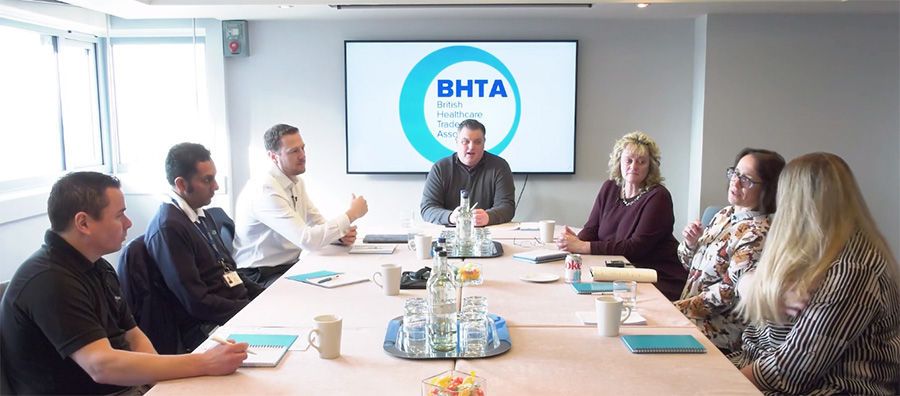Video: Roundtable discusses how to balance face-to-face and virtual assessments for assistive tech
The final webinar of a five-part series exploring the topic of virtual assessments for assistive technology has been released, where clinical and industry leaders discuss how to strike a balance between face-to-face and virtual assessments for assistive technology in a post-pandemic world.
Delivered by the British Healthcare Trades Association (BHTA), the final webisode sees the panellists consider how the world of assistive technology moves forward with video assessments. With the world starting to return to normal and in-person appointments taking place, the specialists consider how to strike a balance between virtual assessments and face-to-face assessments for assistive technology.
Chaired by BHTA’s Head of Policy, Bill Lee, the panel consisted of Matthew James, Director of Precision Rehab; Rachel Russel, Senior Regional Advisor for Foundations UK; Clare Barber, Professional Services Manager at Disabled Living Foundation (DLF); Julie Blake, Senior Clinical Manager at NRS Healthcare; James Bennett, Sales and Marketing Director at Care & Independence; and Nash Kumar, Director at Higher Elevation.
This latest webisode follows the previous session, where the assistive technology panel used hindsight to share what could have been done differently and why when doing virtual assessments for assistive technology, drawing on current knowledge.
In the fifth webisode, Clare Barber, Professional Services Manager at DLF, said she will continue to use video assessments to cover pre-assessments and future training.
She commented: “You’ve got two carers there that you’re going to train, but potentially filming that training and using that virtual means to then roll that out to all the other carers that might be going into that environment to assist.
“There are other ways of using the technology as a part of that whole assessment and intervention process rather than doing absolutely everything face-to-face or absolutely everything virtual. You’ve got this blend and potentially using the virtual means that more within the assessment.”
From a supplier’s that businesses can save time and money by using a blended approach between virtual and face-to-face assessments.
Matthew can use video assessments to view a client after an occupational therapist (OT) has sent all of the relevant information, photographs and measurements over to him. Where he used to go and visit the client with products that might be suitable, he now has a virtual appointment with the client to ensure that he takes suitable product recommendations, which has become a part of the company’s service.
He continued: “We’ve added to our stage of the virtual assessment as pretty much a part of our service now, just purely because it saves us going a long way to find out, ‘Actually you know what, we needed the other product that isn’t with me today’, and that is limiting us going out and doing unnecessary work is the honest answer.”
Nash Kumar, Director at Higher Elevation, further added that virtual assessments can be perfect for follow ups and service reviews on the products. He said: “Because we follow up between three to six months for the first service, we follow it back up with any minor adjustments etc. we can just do it standardly.”
Matthew agreed: “We’ve got to a point where we do a seating review or even an annual service and our engineers will say ‘Can you just walk around your chair, just quick and briefly, can I look at your tyre?’. Just videoing small bits and we know that the guy needs batteries, tyres, whatever bits and pieces.”
Watch the fascinating final roundtable webisode below:


